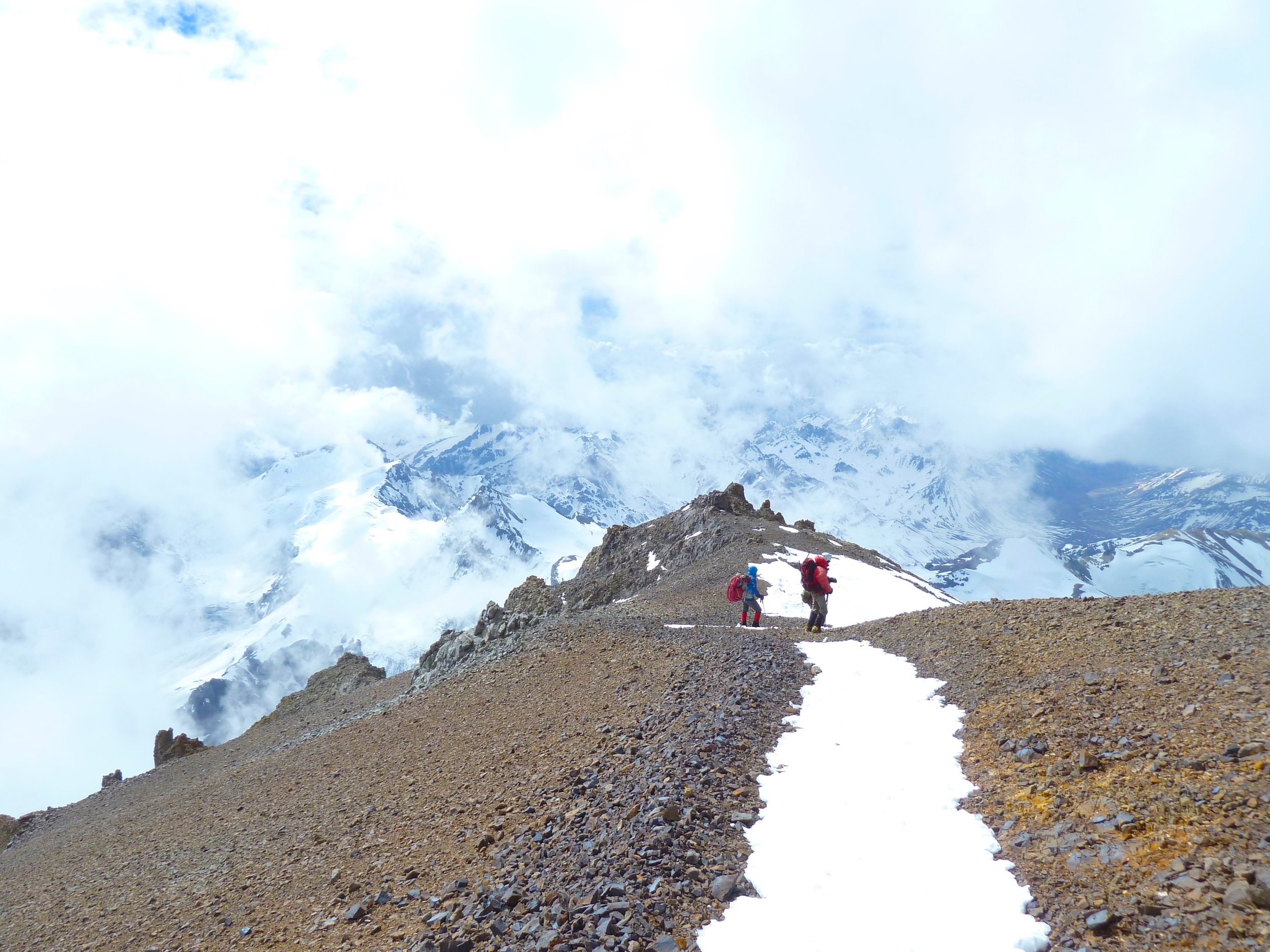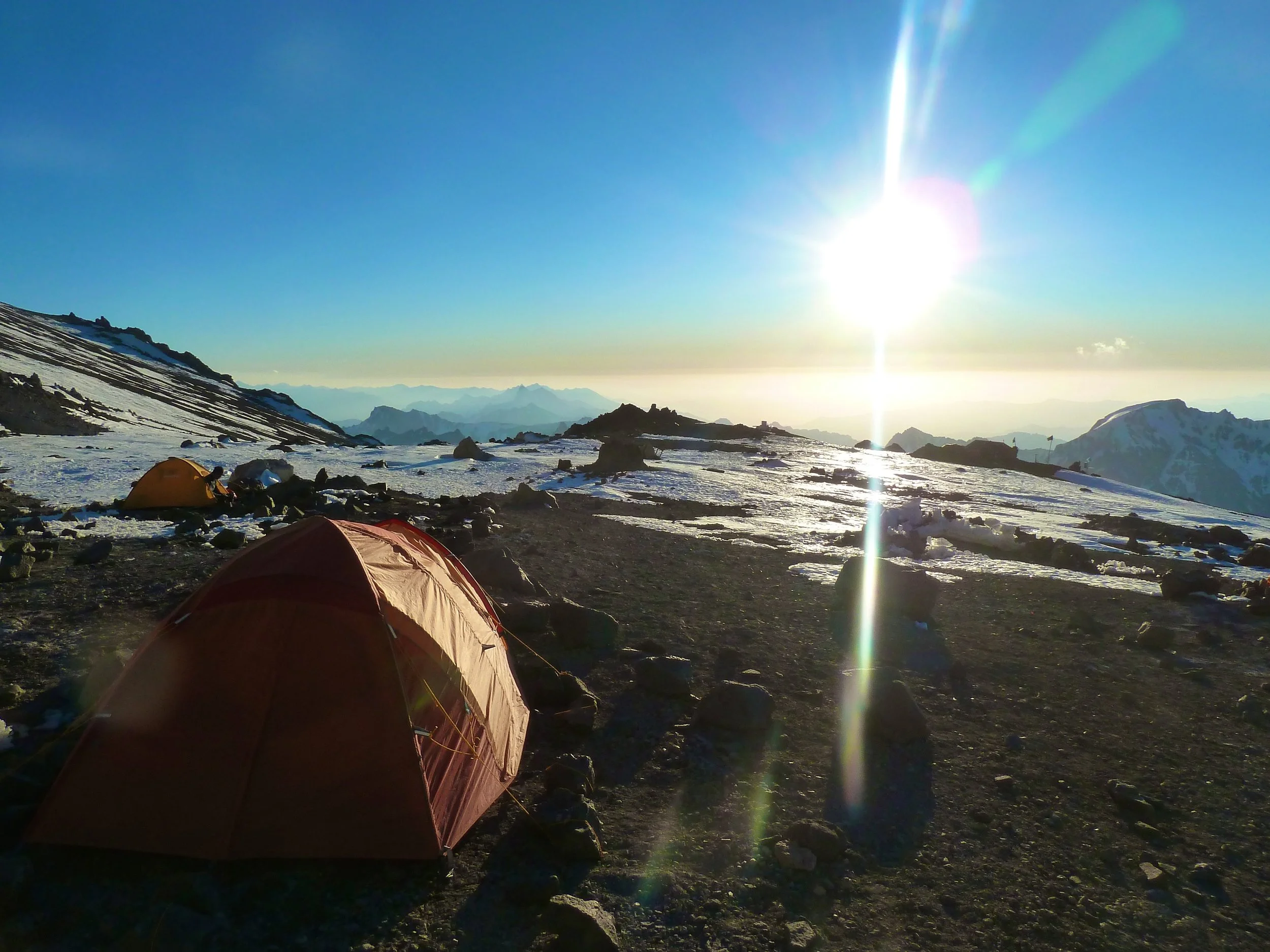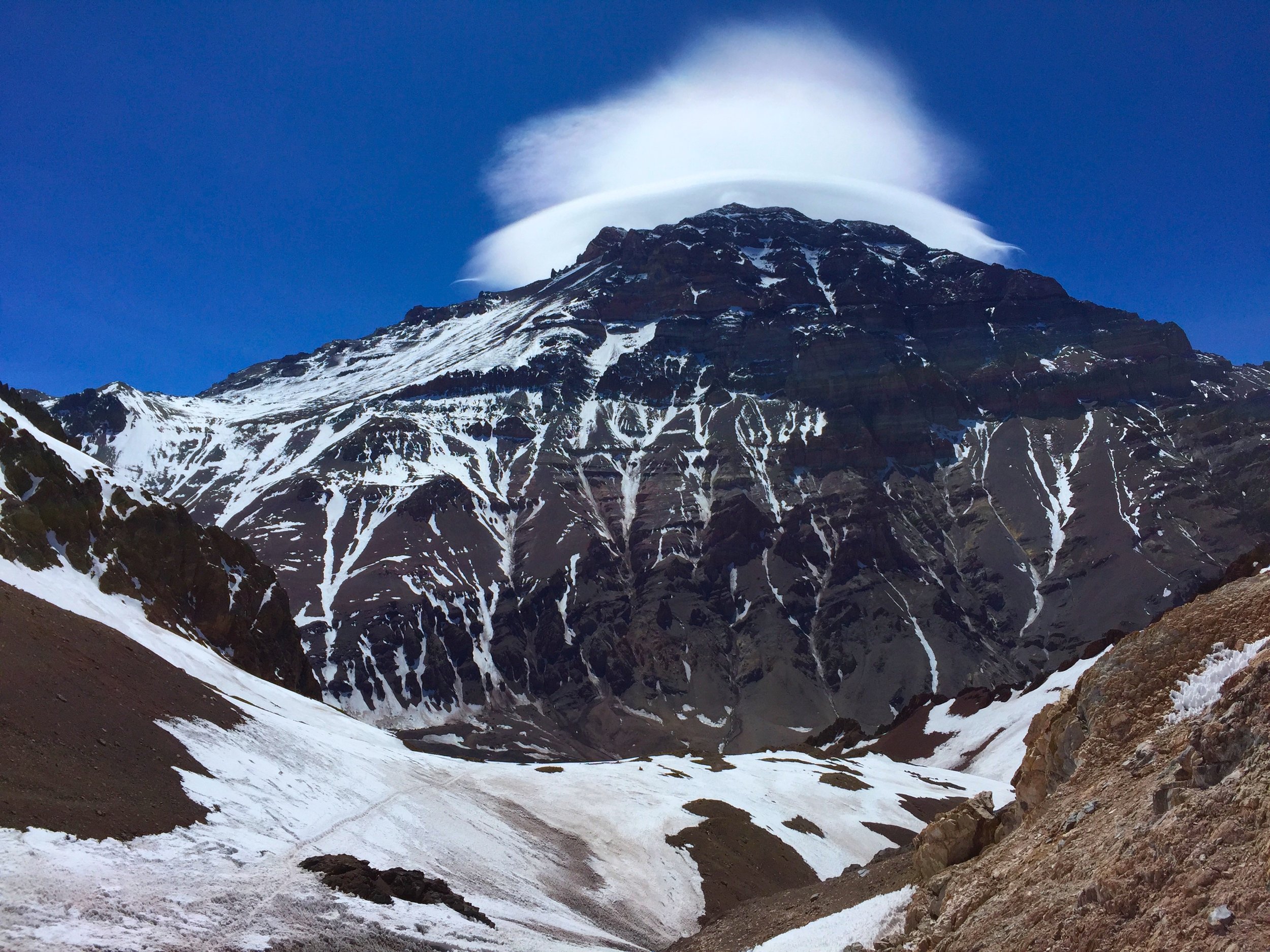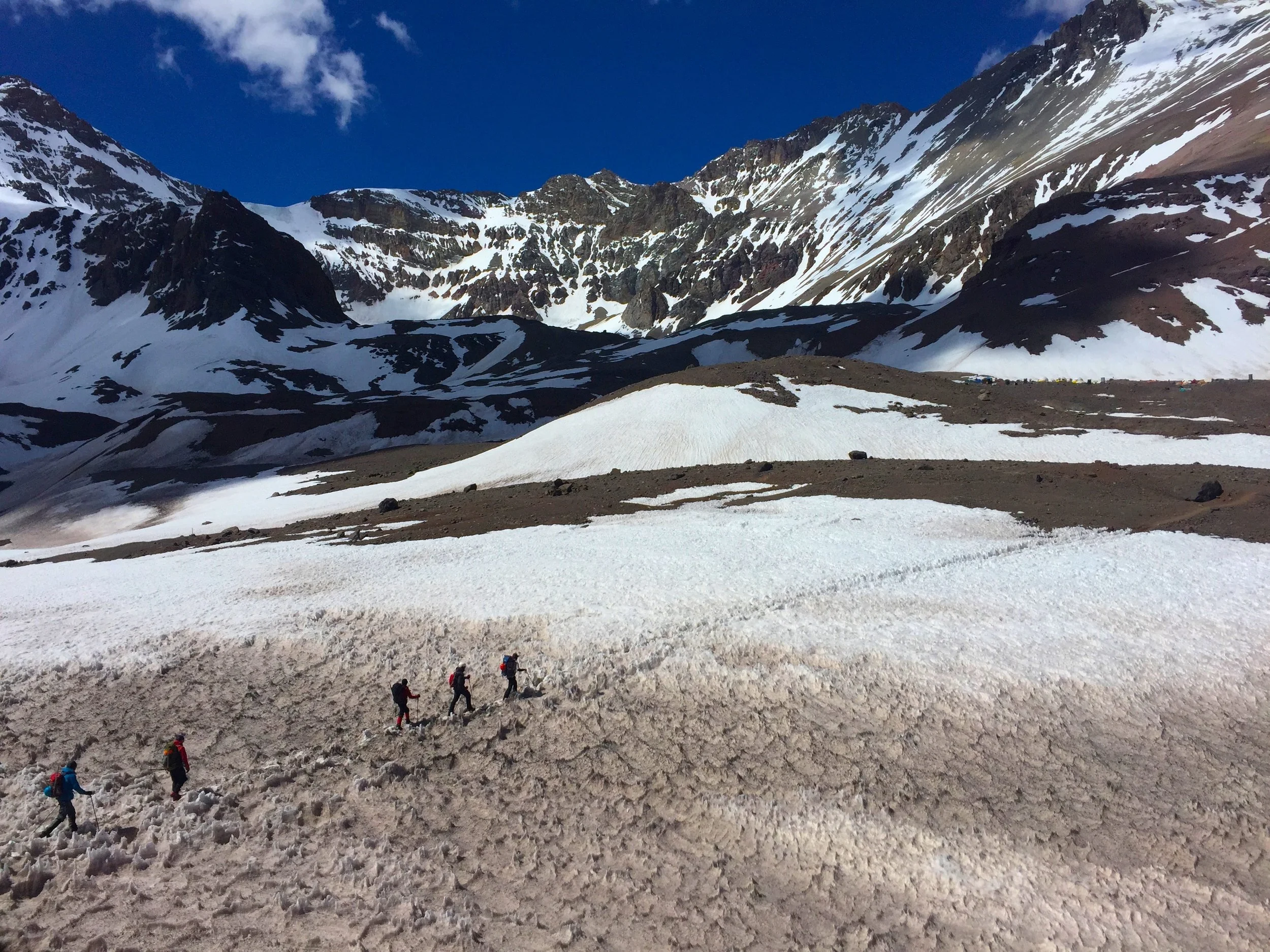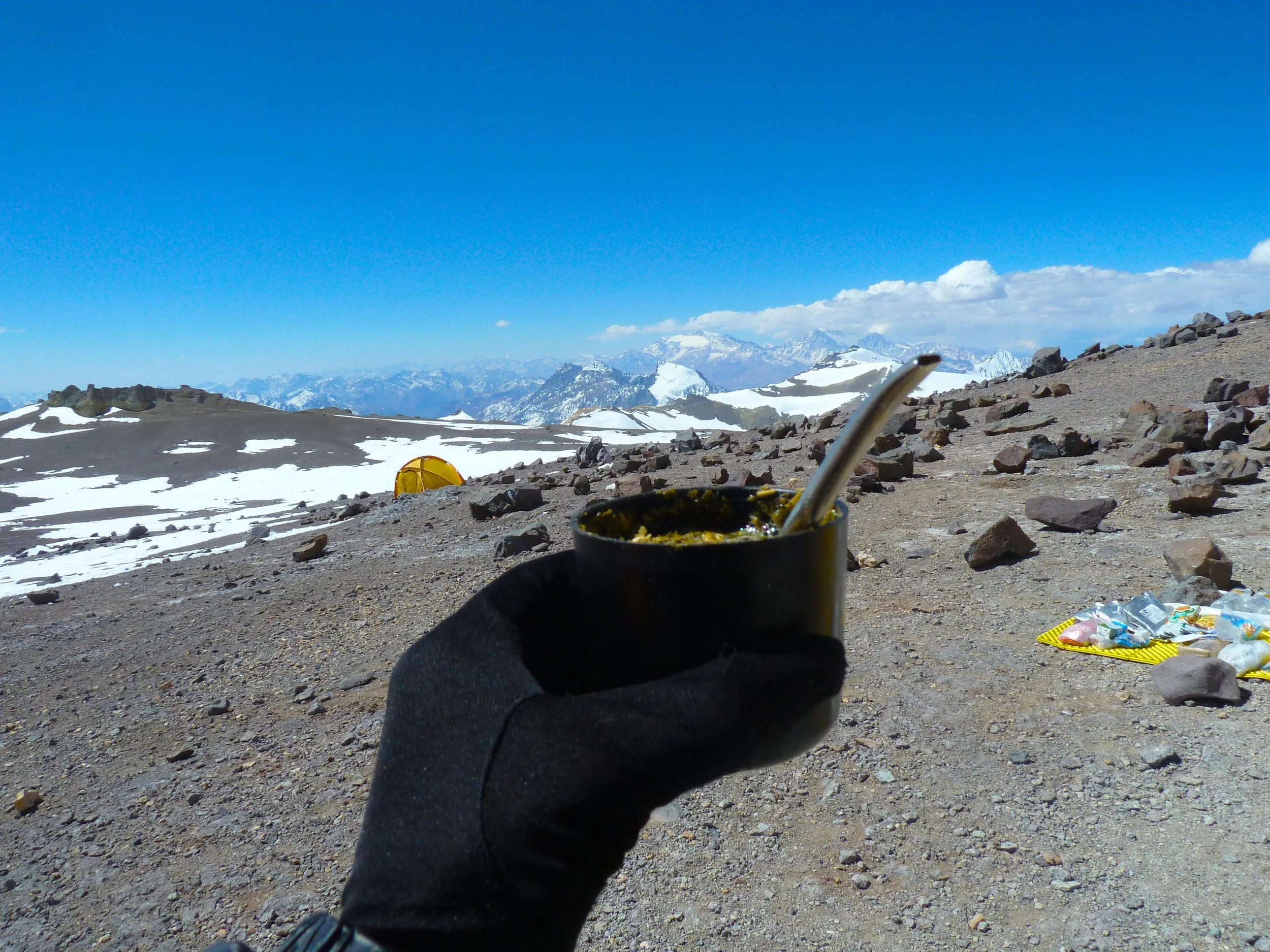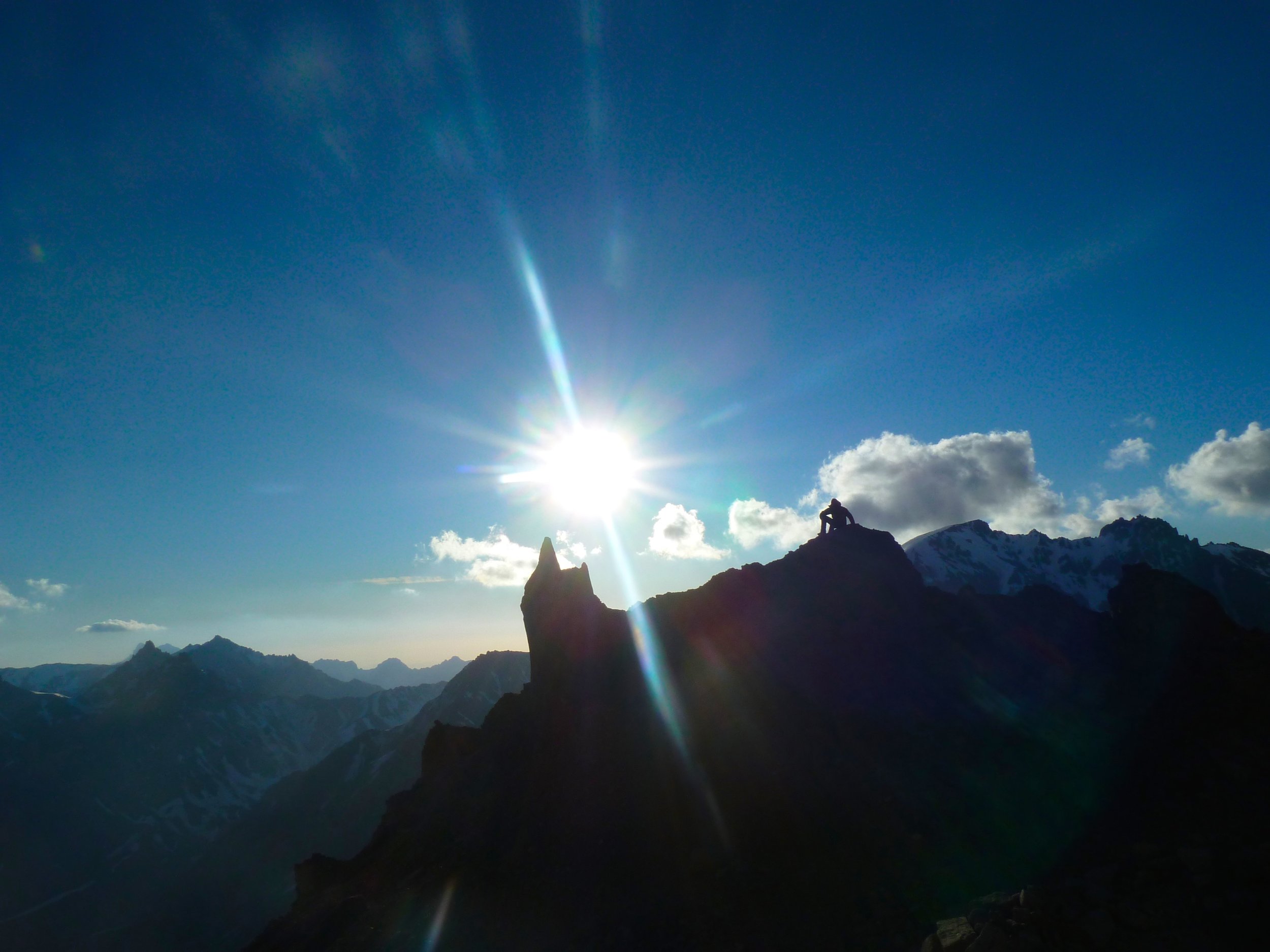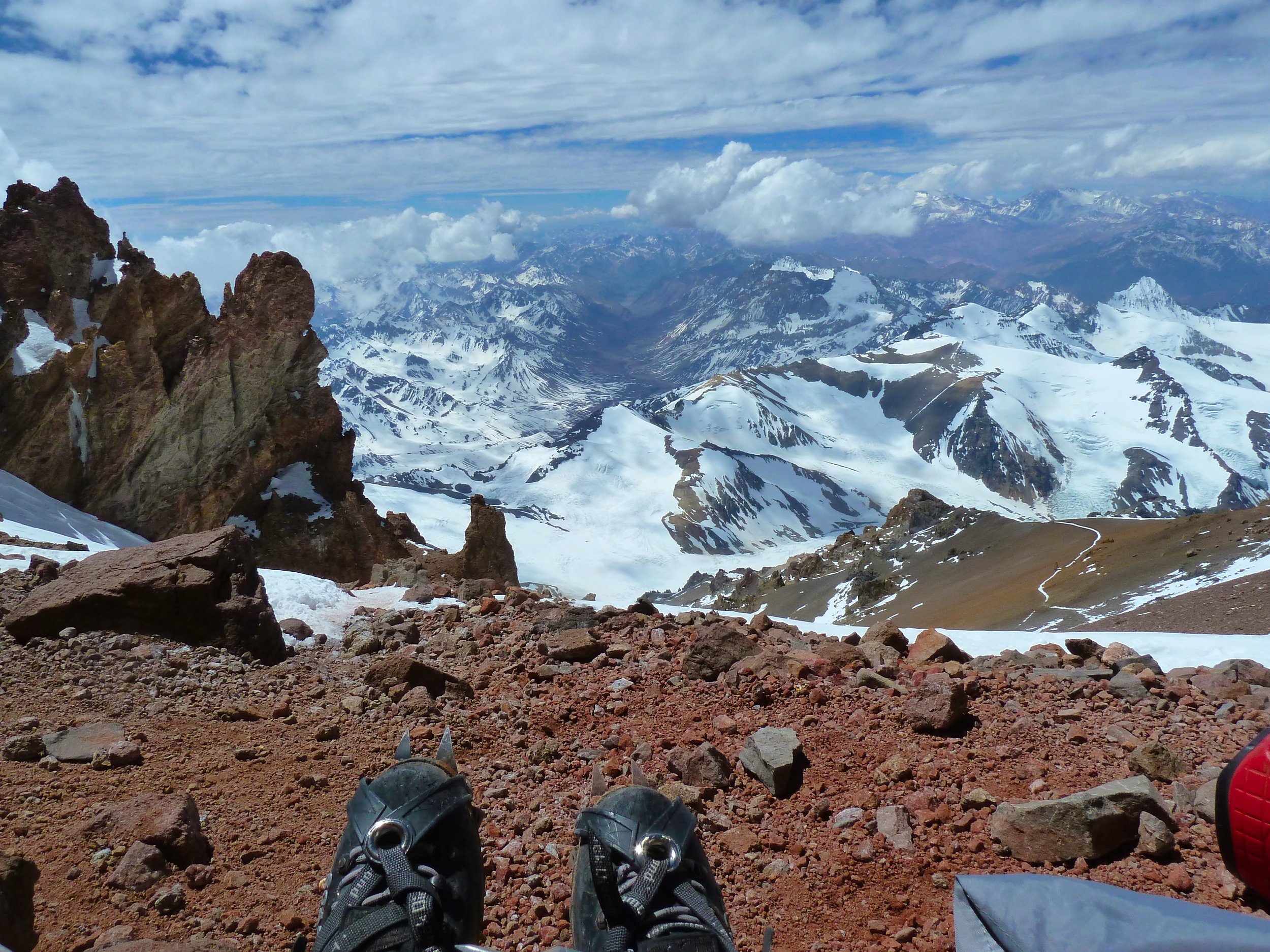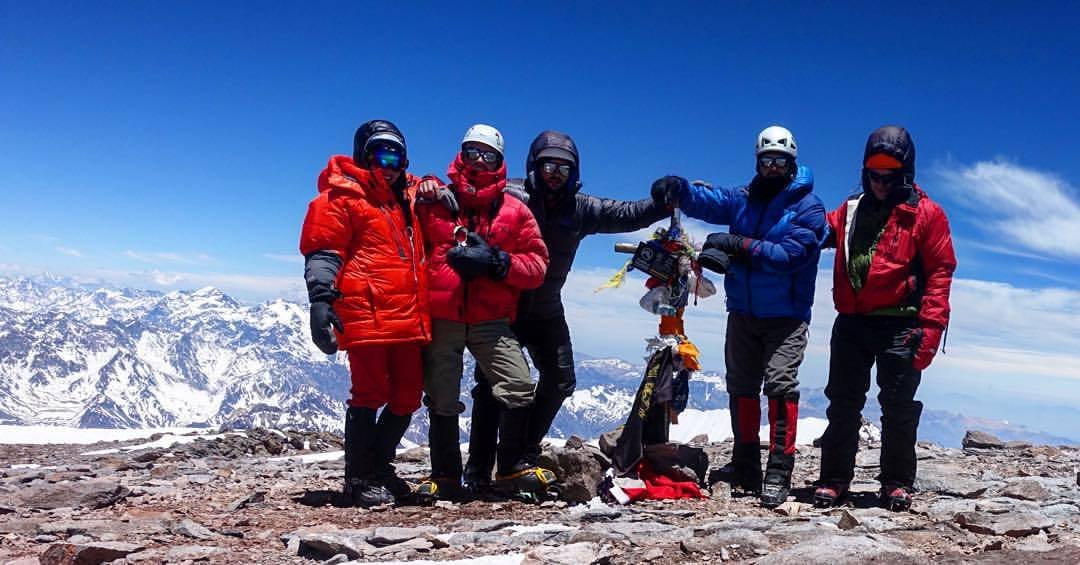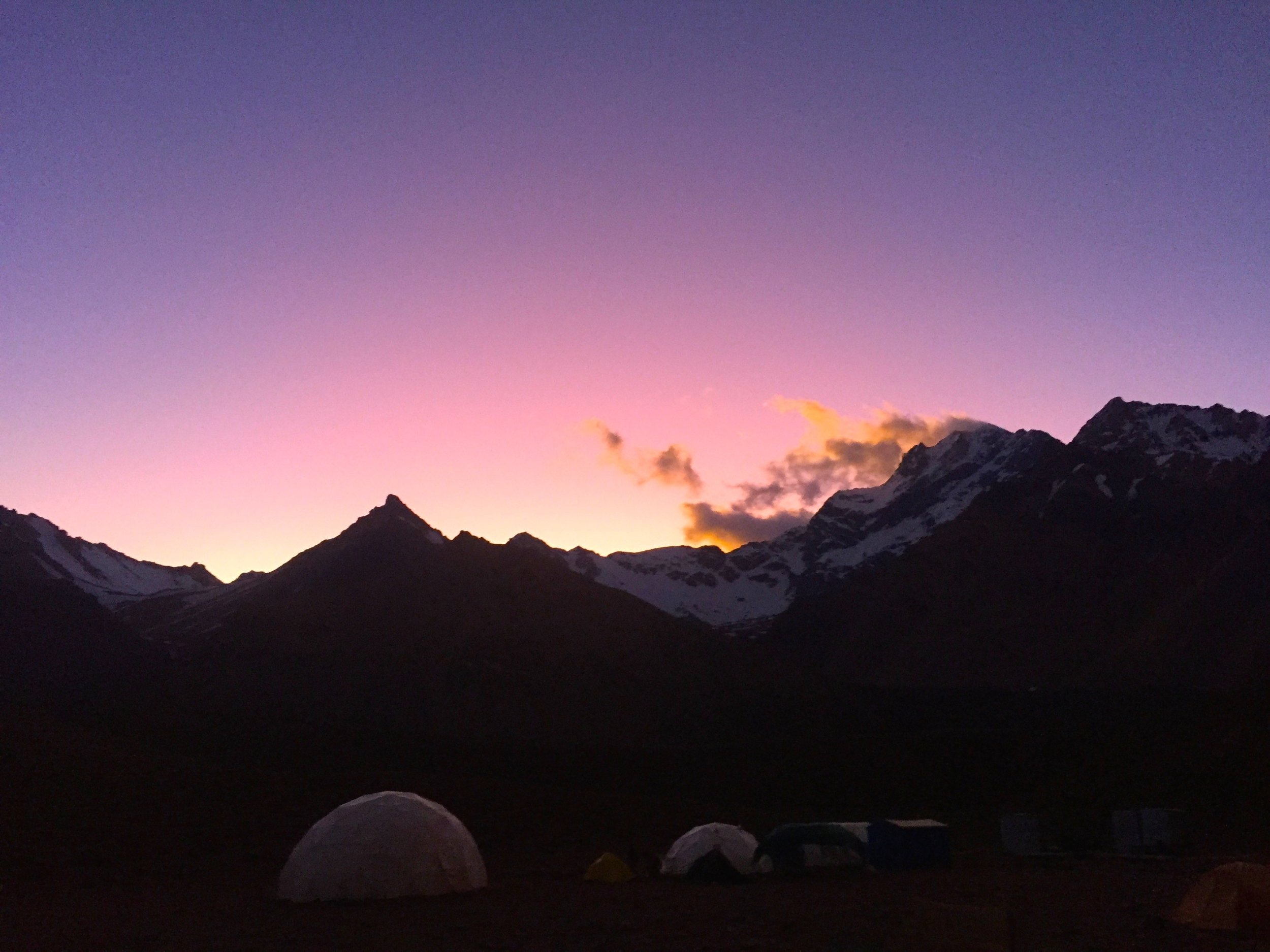Aconcagua
the magic of high altitude
Mountain: Aconcagua
Altitude: 22,837 ft | 6,960 m
Location: Cordillera Principal, Argentina 32.6532° S, 70.0109° WIt’s 8:30am in Nido de Cóndores, 5550 meters above sea level. I am standing outside of my tent in the shade wearing 2 base base layers and a gigantic parka. A couple of meters away the sun has already started touching the ground and I observe how the border between cold and warm slowly crawling into the direction of our tent. The atmosphere is a diffuser, so at that altitude, the light becomes more direct and seems brighter and more blue-ish. My hands are clenched from cold and i am holding a mug with tea. To move my fingers I need to physically bend the fingers of one hand with another to release the tea cup. It’s day 11 without the shower. And I have a huge smile, because I could not have been happier.
Aconcagua is a one big mountain, really big mountain. Since it is located in the middle of Andes, the surrounding range consists of mirriad of peaks, making them good acclimatization targets and natural highlights of the eminence of Aconcagua. On the day we have summited Mount Bonnete, a 5000 m neighbour, Aconcagua had a bedazzling cloud halo around it, almost creating a crown, reminding of its supremacy. I remember sitting on the top of this already pretty tall cliff, eating an alfajor (two biscuits joined together with dulce de leche) and thinking: “how are we going to climb this monster”.
To put it in perspective, Aconcagua takes about 16 days to climb. You spend first 13 days just getting to the third high camp, ensuring proper acclimatization and good conditioning. Every day is work, anxiety, camp chores, acclimatization hikes. Just packing and unpacking drains you. For this trip I have decided to gear up with a sleeping bag rated -40c by EN standards (it’s the warmest sleeping bag currently manufactured), and stuffing it into compression sack every morning took me good 20 min, making me exhausted already at the dawn.
Every mountaineer will tell you that the key to good acclimatization is drinking a lot of water. Well, after drinking 4 to 5 liters every day, to say that I had lost my taste for water would be an understatement. And that’s when I have discovered yerba mate. When I first saw preparation of mate, it seemed like an alchemy class demonstration, rather than regular tea making. The drink is served in a special cup with a very intricate metal straw called bombilla. And the way to enjoy it is to share it, by passing it like a torch. The whole experience of drinking mate feels like a full moon witch ritual and gives one a warm feeling of belonging to the tribe.
And then there is the summit day. A fourteen-hour-day of perpetual struggle is the culmination of the expedition. On December 29th 2015 we woke up at 2am. Because of El Nino, winter that year has presented very challenging conditions, but December 29th was a lucky window of adequate conditions. On altitude, everything is so much slower, so it takes 2 hours to just prepare for the climb — get on your huge plastic mountaineering boots, pack your crampons, layer up in almost all clothes that you took with you and force a frozen energy bar (because on altitude, besides sleep, you also lose your appetite). At 4am we left the camp. It was dark, but the sky provides a natural outlandish neopixel catwalk. You breath and see the warm fog coming out of your mouth. You pace yourself, because you know that the only calories that will carry you up would be from the pre-packaged dinner that you ate almost 2 nights ago. Throughout all this time we were the only team on the approach to the summit, meaning, that the nearest human being could be probably found almost 1000 meters down. In 5 hours we have approached Canaleta, a field of loose scree that creates a vertical three hour cramping on all fours. The finish line seems so close, and you climb, but when you look up, it seems that you have not came closer since the last time you looked up.
We got to the summit around noon. Most people think that summiting the mountain is the epitome of the expedition, that you get goosebumps and fireworks and the final revelation of achieving all your dreams. Not for me. After investigating the summit, and taking 360 view of Andes, the thought that kept rotating in my mind: “there still 6 hours down, there are still 6 hours down”. Time gets a different dimension at the altitude, it seems to hang-up, while in reality it accelerates. We have probably spend only 30 minutes until we have embarked on the descent.
Of course I dreamed about reaching the summit, but from very beginning of the expedition I constantly repeated to myself that if I would not get to the summit, it would be completely fine. Right now, looking back, summit was a special place and would always be a special place in my heart, but the whole experience, the whole process of seeing Aconcagua for the first time at the entrance, steadily approaching it every day, suffering on it, in the end what counted for me most. Every mountain is different and every mountain is special but for me Aconcagua will always be a frozen piece of magic with a light occult taste of yerba mate.
